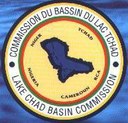Examples of vision statements
In addition, many inspirational, aspirational, ambitious and understandable vision statements, developed during the strategic thinking process, are diluted over the consultation process in order to meet the demands of various stakeholders. Examples of vision statements from a range of projects are presented below.
Black Sea SAP (2009)
|
"The vision for the Black Sea is to preserve its ecosystem as a valuable natural endowment of the region, whilst ensuring the protection of its marine and coastal living resources as a condition for sustainable development of the Black Sea coastal states, well-being, health and security of their population." |
Nubian Aquifer SAP (2012)
|
"The vision for the NSAS adopted by the countries is: To assure rational and equitable management of the NSAS for sustainable socio-economic development and the protection of biodiversity and land resources whilst ensuring no detrimental effects on the shared aquifer countries." |
Western Indian Ocean (2009)
|
"People of the region prospering from a healthy Western Indian Ocean." |
Mekong River Basin SAP (2006)
|
"An economically prosperous, socially just and environmentally sound Mekong River Basin." |
Lake Victoria Basin SAP (2007)
|
"A prosperous population living in a healthy and sustainable managed environment providing equitable opportunities and benefits." |
Lake Chad SAP (2008)
|
"The Lake Chad Region would like to see by the year 2025 the Lake Chad common heritage and other wetlands maintained at sustainable levels to ensure the economic security of freshwater ecosystem resources, sustained biodiversity and aquatic resources of the basin, the use of which should be equitable to serve the needs of the population of the basin thereby reducing the poverty level." |































